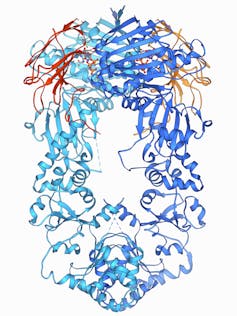Factors Associated With Opioid Overdose After an Initial Opioid Prescription
Question What factors are associated with an increased risk for opioid overdose after the initial opioid prescription to a previously opioid-naive individual?
Findings In this cohort study of 236 921 individuals who received a first opioid prescription, 667 experienced an incident opioid overdose. Patient risk factors included being aged 75 years or older, being male, receiving Medicaid or Medicare Advantage coverage, having a comorbid substance use disorder or depression, and having medical comorbidities. Prescription-related risk factors included an initial prescription of oxycodone or tramadol, concurrent use of benzodiazepines, and filling opioid prescriptions from 3 or more pharmacies.
Meaning Findings from this study suggest that several patient- and prescription-related risk factors are associated with opioid overdose; prescribers, researchers, policy makers, and insurers can apply this information to guide opioid counseling and monitoring, develop clinical decision-making tools, and provide additional opioid prevention and treatment resources to individuals who are at greatest risk for opioid overdose.
Importance The opioid epidemic continues to be a public health crisis in the US.
Objective To assess the patient factors and early time-varying prescription-related factors associated with opioid-related fatal or nonfatal overdose.
Design, Setting, and Participants This cohort study evaluated opioid-naive adult patients in Oregon using data from the Oregon Comprehensive Opioid Risk Registry, which links all payer claims data to other health data sets in the state of Oregon. The observational, population-based sample filled a first (index) opioid prescription in 2015 and was followed up until December 31, 2018. Data analyses were performed from March 1, 2020, to June 15, 2021.
Exposures Overdose after the index opioid prescription.
Main Outcomes and Measures The outcome was an overdose event. The sample was followed up to identify fatal or nonfatal opioid overdoses. Patient and prescription characteristics were identified. Prescription characteristics in the first 6 months after the index prescription were modeled as cumulative, time-dependent measures that were updated monthly through the sixth month of follow-up. A time-dependent Cox proportional hazards regression model was used to assess patient and prescription characteristics that were associated with an increased risk for overdose events.
Results The cohort comprised 236 921 patients (133 839 women [56.5%]), of whom 667 (0.3%) experienced opioid overdose. Risk of overdose was highest among individuals 75 years or older (adjusted hazard ratio [aHR], 3.22; 95% CI, 1.94-5.36) compared with those aged 35 to 44 years; men (aHR, 1.29; 95% CI, 1.10-1.51); those who were dually eligible for Medicaid and Medicare Advantage (aHR, 4.37; 95% CI, 3.09-6.18), had Medicaid (aHR, 3.77; 95% CI, 2.97-4.80), or had Medicare Advantage (aHR, 2.18; 95% CI, 1.44-3.31) compared with those with commercial insurance; those with comorbid substance use disorder (aHR, 2.74; 95% CI, 2.15-3.50), with depression (aHR, 1.26; 95% CI, 1.03-1.55), or with 1 to 2 comorbidities (aHR, 1.32; 95% CI, 1.08-1.62) or 3 or more comorbidities (aHR, 1.90; 95% CI, 1.42-2.53) compared with none. Patients were at an increased overdose risk if they filled oxycodone (aHR, 1.70; 95% CI, 1.04-2.77) or tramadol (aHR, 2.80; 95% CI, 1.34-5.84) compared with codeine; used benzodiazepines (aHR, 1.06; 95% CI, 1.01-1.11); used concurrent opioids and benzodiazepines (aHR, 2.11; 95% CI, 1.70-2.62); or filled opioids from 3 or more pharmacies over 6 months (aHR, 1.38; 95% CI, 1.09-1.75).
Conclusions and Relevance This cohort study used a comprehensive data set to identify patient and prescription-related risk factors that were associated with opioid overdose. These findings may guide opioid counseling and monitoring, the development of clinical decision-making tools, and opioid prevention and treatment resources for individuals who are at greatest risk for opioid overdose.
Opioid medications remain a mainstay of treatment of severe pain. In the setting of the modern opioid overdose and death epidemic, use of such medications has decreased, but there were still 168.9 million opioid prescriptions in the US in 2018.1 Each prescription of an opioid to a previously opioid-naive patient creates the potential for the development of chronic opioid use and opioid use disorder.2 For this reason, multiple entities and states have produced opioid prescribing guidelines, such as the Centers for Disease Control and Prevention Guideline for Prescribing Opioids for Chronic Pain in 2016 and the Oregon Acute Opioid Prescribing Guidelines in 2018.3,4 The surgical literature has declared opioid dependence to be a never-event (along with use disorder and overdose)5 and as the most common surgical complication,6 affecting approximately 5% to 7% of patients who started a new episode of opioid use.7
An association exists between the characteristics of a patient’s first opioid prescription and long-term use. Shah et al8 discovered that the number of days’ supply of the initial prescription was directly associated with the development of long-term use. Deyo et al9 found that greater morphine milligram equivalents (MMEs) of the initial prescription were associated with increased likelihood of developing long-term use. Previous work with the Ohio prescription drug monitoring program (PDMP) database found that different prescriber specialties had different rates of long-term use by patients10 likely because the indications of opioid use and underlying patient factors create different risks for long-term use.
Although chronic opioid use is an undesirable outcome, the most substantial harms from a new episode of prescription opioid use are overdose and death. Unfortunately, the ability to link prescribing decisions to specific outcomes has been hampered by data source limitations. Prescription drug monitoring programs describe the prescription filling patterns of patients with long-term use but do not contain data about drug indications, comorbid conditions, the patient’s environment, or intervening outcomes, such as opioid use disorder or overdose. Administrative claim files are useful because they capture prescriptions that are covered by insurance but may be incomplete if the prescriptions are paid in cash or if patients change insurers. In addition, the most serious outcome of interest, opioid-related death, is often found not in PDMP or insurance data but in vital records.
To address data source limitations and provide a more comprehensive analysis of risk factors after the initiation of opioid therapy, we combined claims data with several public health data sets (including All Payer All Claims Data [APCD], vital records, PDMP, and hospital discharge data) to create the Oregon Comprehensive Opioid Risk Registry.11 Using the Comprehensive Opioid Risk Registry, we constructed a retrospective cohort of opioid-naive patients who received an initial opioid prescription to assess the patient factors and early time-varying prescription-related factors associated with opioid-related fatal or nonfatal overdose. We hypothesized that some patient factors (eg, insurance type and high disease burden) and prescription factors in the first 6 months after opioid initiation (eg, high doses, and opioid and benzodiazepine overlap) are associated with increased risk of opioid overdose.
READ ON


